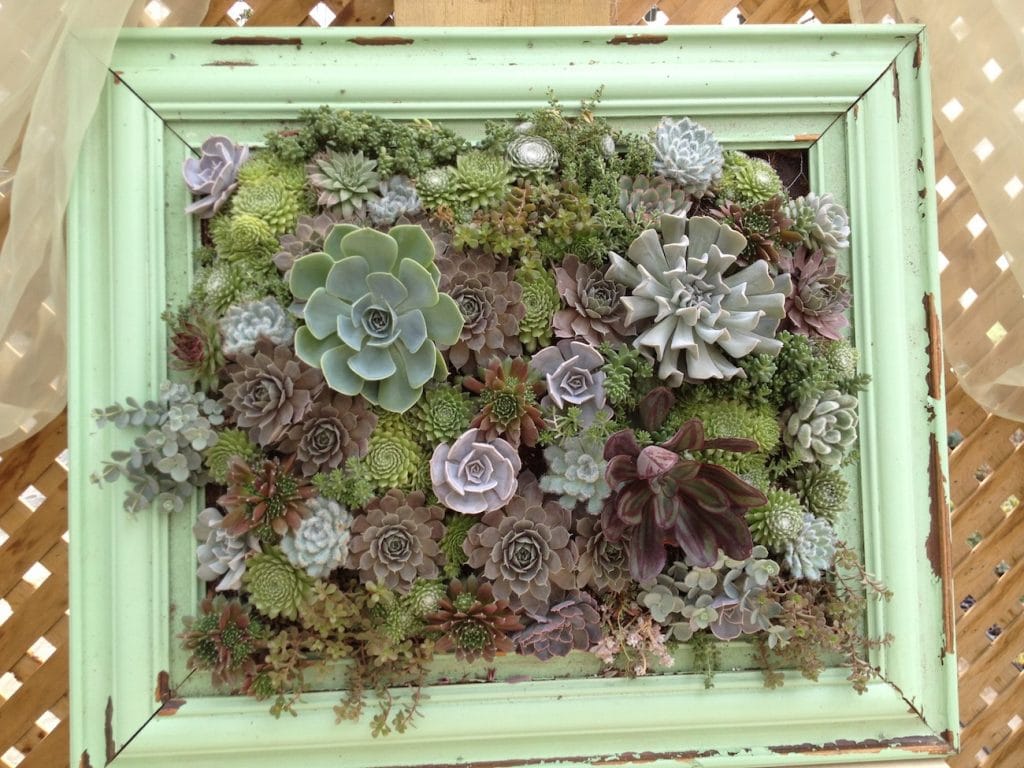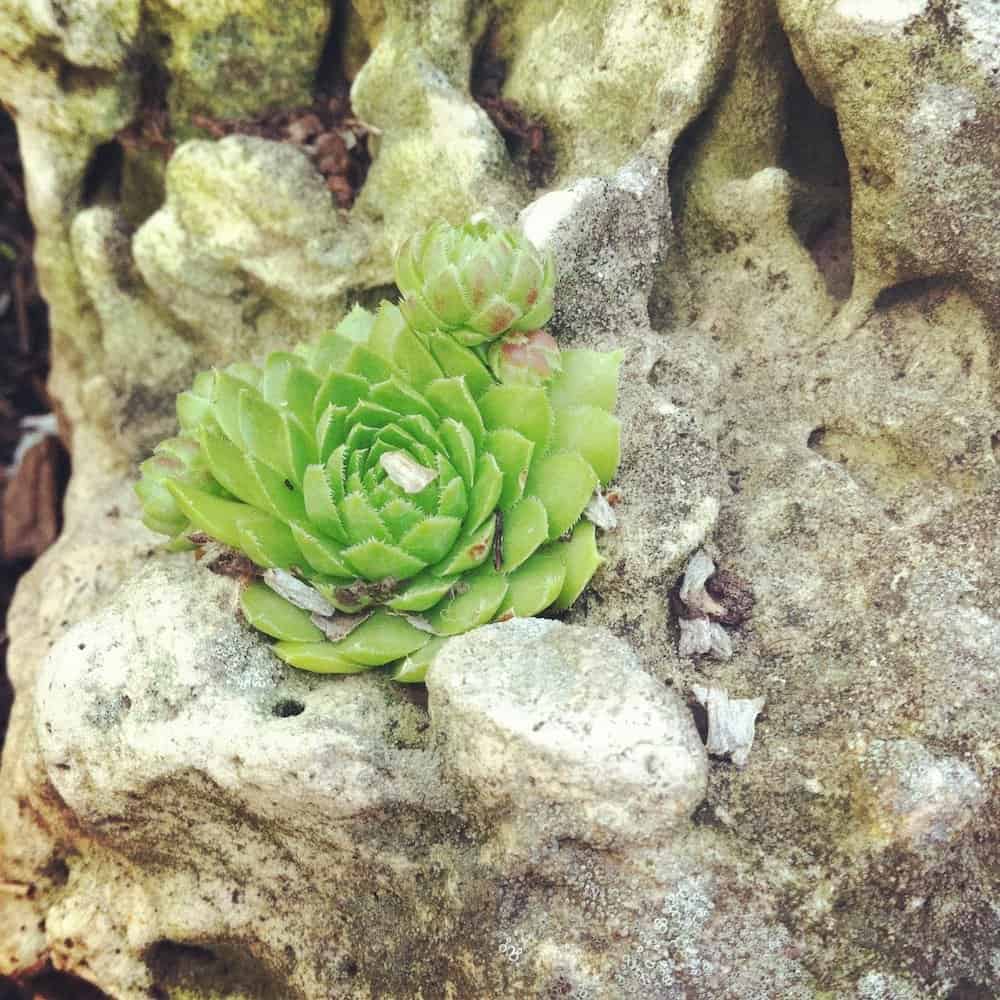
I’ve really fallen in love with succulents this year, and I had an opportunity to learn more about them at Floral Dimensions’ recent open house. Floral Dimensions is based in Fenwick, Ont., and the company specializes in propagating and selling succulents. The fall 2012 Garden Making has an article on growing succulents in containers, but Marian and Louis Damm, owners of Floral Dimensions, answered some of my beginner questions and I also saw some amazing ways to display them.
Succulents are like cacti, and the key to a happy succulent is giving it an environment like a desert—hot, sunny days, cool nights and very little water. When in doubt on how to care for my succulents, I just ask myself, “What would the desert do?”
Deserts don’t have winters like Canada’s, so some succulents won’t survive outside year-round. To overwinter my tender succulents, I’ll bring them inside before the days get too chilly, and put them in the sunniest window I have and not water them. Floral Dimensions’ greenhouse sometimes goes as low as 5°C at night, so I’ll be sure not to let my succulents stay out in temperatures colder than that. They’ll go dormant and not look their prettiest through the winter, but come March and April, they can take a little water and fertilizer every few weeks, gradually come back to life, and go back outside as the temperature warms.

Some succulents, including hens-and-chicks (Sempervivum spp. and cvs.), will survive outdoors in the ground year-round. My good friend Heather recently planted some on rocks in her front garden. I agree with her strategy of putting plants wherever she can find space, including on rocks.
Some succulents flower, and the bright, neon buds attract hummingbirds and bees. Even in a new, beginner garden, pollinating plants should be a priority, and there are some succulents that fit that role nicely. If you have a succulent with long shoots, or heads, coming off that aren’t doing anything attractive — like flowering — you can cut them off near the base, and new “pups” will grow off to the side where you make the cut. The plants gradually grow wider to fit the space you give them; some at Floral Dimensions were absolutely enormous.
The other neat thing I learned is that succulents are easy to propagate. Unlike the usual method of taking cuttings, you let the cut ends dry and callus over before putting them in soil. Floral Dimensions had shelves of cuttings drying before being put into dry soil to root and start again.

Aside from the huge selection and good advice, Floral Dimensions has some amazing succulents planted in found objects. Because succulents have short roots and need only a shallow amount of soil, you can grow them in almost anything. They work well together, and the myriad textures, colours, shapes and flowers make it easy and fun to customize a display in a picture frame, chair seat, birdbath, wreath, or anything else you can think of.
The gardener, decorator and collector in me have found a lot of reasons to love succulents this season. They’re low maintenance and unique. My gardening and non-gardening friends always notice my succulents, because they’re less traditional than other plants and a little bit quirky. Needless to say, that suits me and my patio of potted plants perfectly.

More more on succulents, get the Garden Making with a feature on easy-care succulents:









I bought a succulent and I can’t figure out what it is! I bought it for my mom for mother’s day and she can’t figure out what it is either it looks exactly like one of the succulent in the picture! But it has huge pink shoots. If someone could PLEASE get ahold of me that would know what it is that would be great!
Your directions for the picture frame succulent display says: ‘Place the frame flat then add planting mix’. The frame would have to already have a ‘bottom’ right? What would the soil sit on before adding chicken wire and plants?
What kind of soil do u use?
Hi Marilyn, Succulents don’t like wet feet, so it’s best to use a quick-draining, granular soil mix. If you want just enough to make, say, a small dish garden it’s probably easiest to use a commercial blend. Louis Damm of Floral Dimensions recommends Lambert Cactus and Succulents Mix. If you want to make your own blend, here’s Louis’ recipe for home gardeners: 30% peat moss, 15% sand, 15% fine gravel, 10% perlite—and the remaining 30% black top soil. If you’re planting a container for outdoors, accommodating for drainage is even more important in the event of a few rainy weeks. Enjoy!
For Christmas, I gave my 8 year old granddaughter all the fixins to build a succulent garden. She built her project right the next day and is lovingly caring for it. She’s a collector so she will search for unique rocks, small pieces of interesting tree bark and branches to personalize her garden. Succulents, being so weirdly-interesting and easy to grow and care for, are excellent gardens for beginner-gardeners.
What a wonderful idea as a gift for a child. Creativity and responsibility, two wonderful things to teach a child. Thank you for posting this.